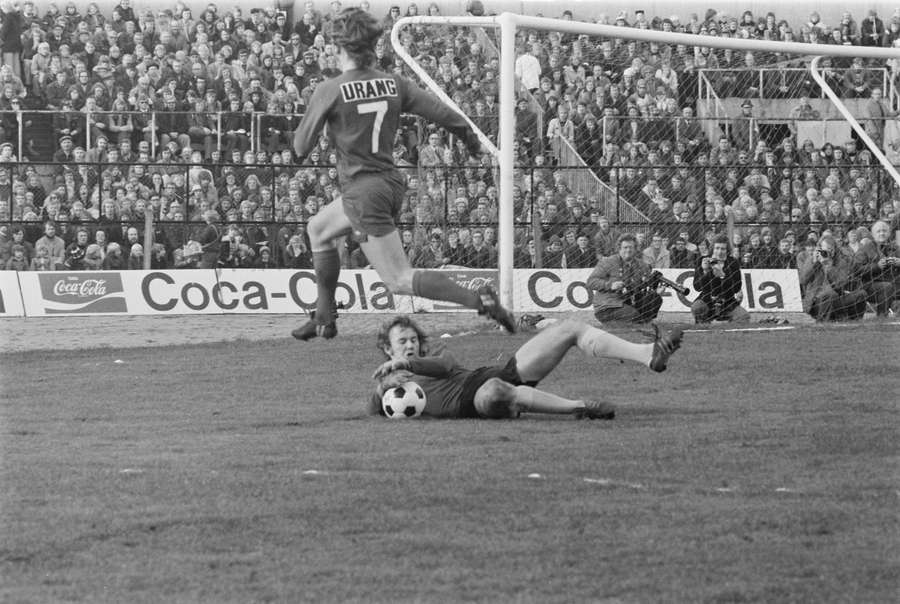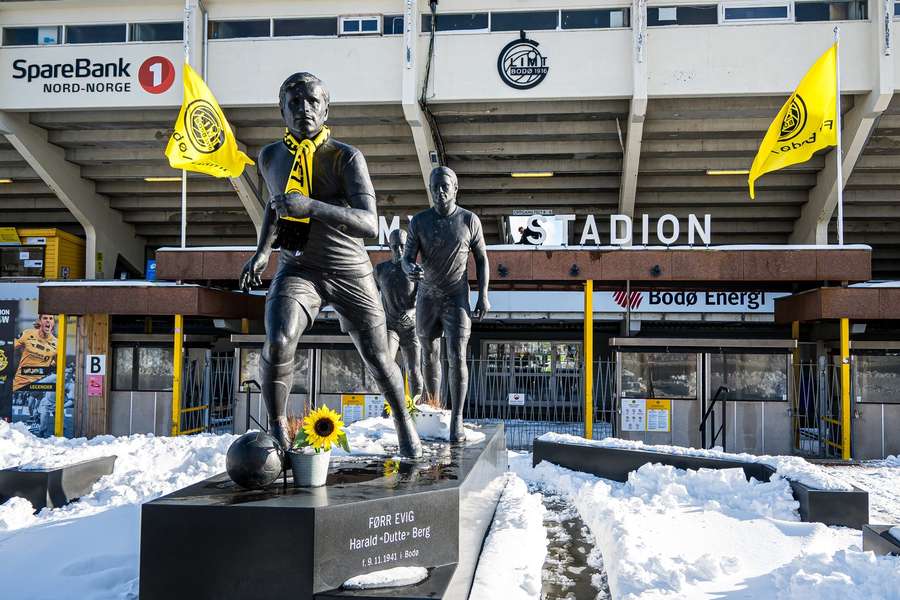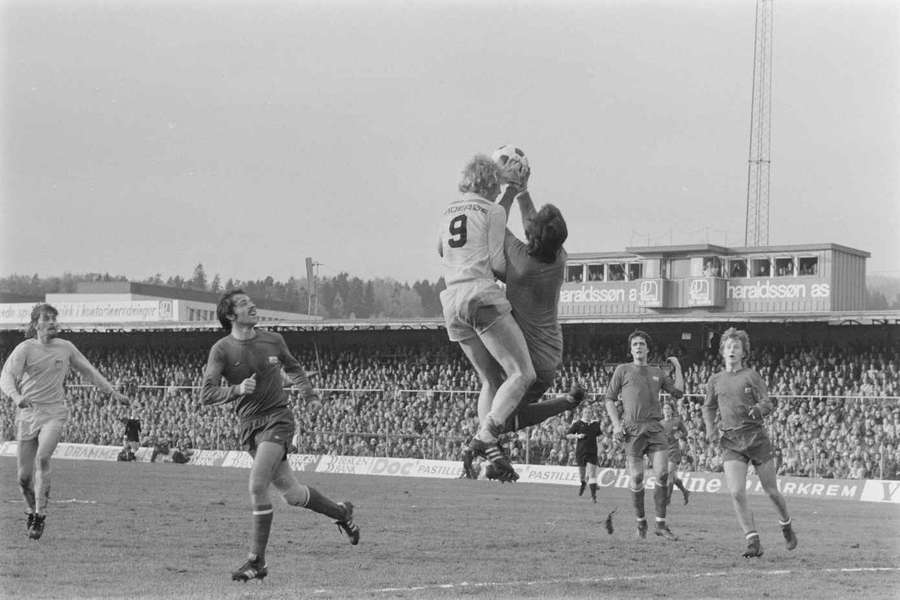Every day, a group of older men make their way to the Aspmyra stadium in Bodo, north of the Arctic Circle, to have their coffee, discuss old stories, and enjoy each other's company.
It's still uncertain when the “coffee table” tradition began, but most members of the tradition trace it back about 60 years as tales are retold and memories shared over past and more recent glory days.
It may seem like a mundane scenario, but it's not. Every member of this group has immortalised themselves in the history of Norwegian football, as they were all part of the Bodo/Glimt squad that, against all odds, won the 1975 Cup final against Vard, to shatter old prejudices and false conceptions about northern Norway.
The 1975 Cup final has come to signify a milestone in Norwegian football history, as Jacob Klette, Ivar Bakke, Harald Berg, and other members of the group around the coffee table managed to turn convention on its head.
Clubs from the northern part of Norway, some 75 miles inside the Arctic Circle, were not allowed to play in the Norwegian Cup until 1963.
According to a professor of history, Steiner Aas from the Bodo University, northern Norway, was during that time secluded from the rest of the country as there were no trains, roads were terrible, and travelling from Bodo to Tromso for a game took one day and one night, making it very hard for fans to follow their teams.
At the same time, people from the region were frowned upon and regarded as poor relations on and off the pitch.
"Back then, people from northern Norway were literally hated, and the general attitude towards us was disgraceful," says Klette, who made almost 400 appearances for a team that changed the cultural relations between the north and the south, to Flashscore.
"It was normal that people from northern Norway even spoke like people in the south because our culture was in such disregard.
"Even when I was living in Oslo in the late 1960s, I would see people advertising for apartments to rent, but not for people from the north. I was disgusted by it."
Promotion to the top flight was made possible for northern sides only in 1972, and while Bodo/Glimt were still playing their trade in the second tier, they launched a Norwegian Cup campaign in 1975 that was to have monumental implications for Norwegian football and culture.
"Bodo met one of the dominant forces in Norwegian football, Viking, in the quarterfinal. A year before, we met them in Stavanger and lost heavily, but this time we won.

"It was a surprise for everyone that we, coming from the second division, could play as good as Viking, who were leading the first division then," says Steiner Aas.
Kleppe became the hero of the day, scoring the winner against the Stavanger-favourites.
"I remember it like yesterday," says Klette, who worked as an optician in the family business in Bodo alongside playing as an amateur.
"After the match, everyone swarmed onto the pitch, and all the children surrounded me." Bodo/Glimt went on to beat Stark from Kristiansund, who were second in the first division, in the semi-final before they faced Vard, another great team from the second division, in the final.
"In the final in Oslo, around 35,000 spectators went through the stands, and half of them came from the northern part of Norway. So, when we entered the pitch and saw all our fans in the stands, we knew instantly that we were going to do something spectacular," says Klette.
Heading the north into the nation
And so they did as the unsung outfit from the Arctic Circle went on to celebrate a glorious 2-0 win, among others, thanks to Sturle Solhaug, who rose to fame as the player who "headed the north into the nation," according to Steiner Aas.
The unlikely win in the Norwegian Cup final gave Bodo a ticket into the European Cup Winners' Cup tournament, where they faced Napoli in the first round. After losing the first leg at home 2-0, the Norwegians had an uphill task before the return leg.
"We played against them at the Stadio San Paulo (today known as the Diego Maradona Stadium) with 50,000 spectators who booed their players because we dominated the game and had three amazing chances to score. We lost 1-0, but it gave us further belief in what we were capable of," explains Kleppe.
Today, there are eight champions from that year around the infamous coffee table at the Aspmyra stadium, where the young stars of the current Bodo team, which has put Norway on the world football map by qualifying for the Champions League, every day greet the heroes from 1975 as the legacy continues and the torch is passed on to the next generation.
One of them is Harald Berg, grandfather to the current captain, Patrick Berg, who today is considered to be the Erling Braut Haaland of the 70s.
Berg played as a professional for FC Den Haag in the Netherlands in the 70s, during the height of Ajax’s dominance. As such, Berg was part of the Cruyff and Neeskens era in Dutch football and even became the leading goalscorer in the Eredivisie at the beginning of the 70s.

Berg played a pivotal role in the Bodo side that won the Cup in 1975, according to Kleppe: "He made us believe that anything was possible and not to have too much respect for our opponents. When Harald Berg came home in 1974, it totally changed the attitude of our players."
The belief in their own abilities was to become key for Bodo and the Arctic Circle region, as a strong northern identity and sense of pride were formed in the wake of the 1975 Cup triumph.
"We never anticipated how important the win would be for the people in Northern Norway. The cultural importance of the victory should never be underestimated. The attitude towards us totally changed after that win in the cup final. You can see how we were treated back then and how we are treated today," adds Kleppe.
Despite the development of the game, and not least Bodo/Glimt gradually taking steps towards challenging some of the top teams in Europe today, it's hard to find something that measures up to the 1975 Norwegian Cup final, says Steiner Aas.
"Nowadays, I get to go all over Europe watching Bodo/Glimt play in the Europa League and now the Champions League. It’s incredible; it was absolutely unthinkable some years back.
"But it’s hard to match it with the 1975 Cup Final. That was instrumental in the history of the club and the nation, even if today, with the globalisation of football, many people don’t tend to consider domestic cup finals as that important."

